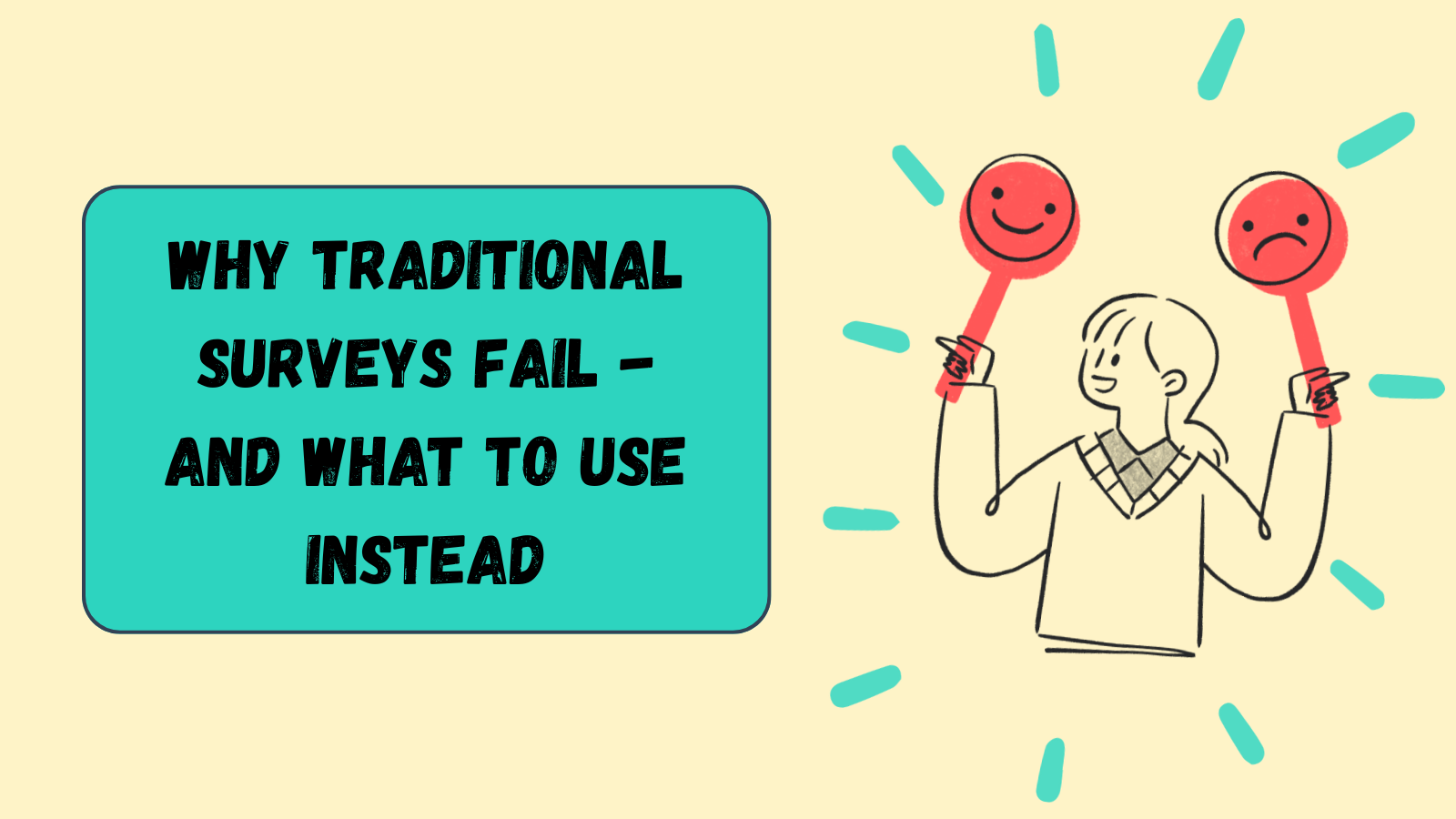Why traditional surveys fail — and what to use instead
Traditional surveys are boring, bloated, and often ignored. Here’s why people stop filling them out—and how conversational forms fix it.
10/22/2025

Why traditional surveys fail — and what to use instead
You know the drill: a big block of questions, 10 radio buttons in a row, a progress bar that feels like it’s stuck.
Traditional surveys are the email newsletters of feedback collection—technically fine, but nobody wants to open them.
Let’s dig into why people stop filling out traditional surveys, and what a better approach looks like in 2025.
Spoiler: You don’t need more questions. You need a better conversation.
Try one now →
1) People don’t quit because they hate feedback—they quit because it’s dull
Traditional surveys make people feel like they’re working for you.
When you throw twenty checkboxes on screen, you’re saying “please do our job.”
It’s not that people hate giving feedback—they just don’t want to climb a mountain to do it.
The fix: make it feel like a chat, not a chore
Conversational forms ask one question at a time, give context, and build rhythm.
Each answer moves the story forward instead of reminding the user how long it’ll take.
That’s why they have higher completion rates and richer answers.
Build one yourself: Create a conversational form →
2) The “form fatigue” problem
When was the last time you happily answered 15 grid questions about your “overall satisfaction”?
Exactly.
Traditional forms overload users with decision fatigue and repetition.
By question five, they’re skimming, guessing, or gone.
The fix: one idea per question
Keep prompts single-purpose and conversational.
Instead of:
“How satisfied are you with the product quality, support, and price?”
Try:
“How would you rate our support so far?”
Then follow up with “And what about pricing—fair, high, or great value?”
You get cleaner data and more completions.
3) Static forms can’t adapt
A static survey can’t react. Whether a user is happy, confused, or annoyed, it just keeps pushing the same next question.
That’s where conditional logic and branching change the game.
Conversational forms adapt—skip irrelevant steps, ask follow-ups that make sense, and feel personal without the extra work.
Smarter flow = smarter data.
You don’t need 40 questions when 6 relevant ones do the job.
4) Lack of visibility: no idea where people drop off
Traditional tools rarely show you where respondents leave. You just see the final count and wonder why it’s low.
Survee gives you drop-off analytics—you see where people bail, why they might have, and how to fix it.
If 42% leave at question 3, you’ve got something to test.
That’s how you improve completion systematically, not by guessing.
5) The “too corporate” tone
“Please rate your satisfaction on a scale from 1–5.”
Sure, it’s fine. But it’s not you.
It’s robotic, detached, and instantly signals: “This is one of those forms.”
People respond better to warmth and clarity.
A conversational tone (“How are we doing so far?”) feels personal and human—and still professional.
6) What to use instead
You already know the answer: conversational forms with built-in analytics.
They feel natural, they’re fast to complete, and they give you actual insights instead of guesswork.
Key advantages
- One question at a time keeps attention high
- Branching keeps things relevant
- Built-in analytics track drop-off and completion
- Mobile-first layout makes finishing easy anywhere
- Privacy built in—no trackers, no noise
Try it for yourself: Start free →
Final thoughts
Surveys aren’t broken—the way we build them is.
If you want answers that matter, make the experience enjoyable.
That’s what conversational forms do: they turn the feedback process into a real dialogue instead of a to-do list.
Ready to make the switch?
👉 Create your first conversational form today →
Published by Survee — forms that feel human, with analytics that make sense.